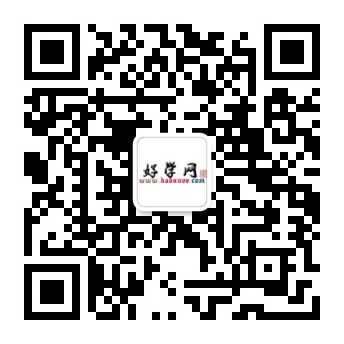I have learned a lot from my motorhead: publishers need printers, engineers need mechanics, and architects need builders. Most important, I have learned that fathers don’t need clones in footsteps or anywhere else.
My son may never make the school honor roll. But he made mine.
41. What used to be the author’s hope for his son?
A. To avoid becoming his clone.
B. To resemble him in appearance.
C. To develop in a different direction.
D. To reach the author’s unachieved goals.
42. What can we learn about the author’s children?
A. His daughter does better in school.
B. His daughter has got a master’s degree.
C. His son tried hard to finish homework.
D. His son couldn’t write his book reports.
43. The author let his son repair the car because he believed that_______.
A. His son had the ability to fix it.
B. it would save him much time.
C. it wouldn’t cause him any more loss
D. other motorheads would come to help.
44. In the author’s eyes, motorheads are _______.
A. tidy and hardworking
B. cheerful and smart
C. lazy but bright
D. relaxed but rude
45. What did the author realize in the end?
A. It is unwise to expect your child to follow your path.
B. It is important for one to make the honor roll.
C. Architects play a more important role than builders.
D. Motorheads have greater ability than office workers.
C
When John was growing up, other kids felt sorry for him. His parents always had him weeding the garden, carrying out the garbage and delivering newspapers. But when John reached adulthood, he was better off than his childhood playmates. He had more job satisfaction, a better marriage and was healthier. Most of all, he was happier. Far happier.
These are the findings of a 40-year study that followed the lives of 456 teenage boys from Boston. The study showed that those who had worked as boys enjoyed happier and more productive lives than those who had not. “Boys who worked in the home or community gained competence (能力) and came to feel they were worthwhile members of society,” said George Vaillant, the psychologist (心理学家) who made the discovery. “And because they felt good about themselves, others felt good about them.”
Vaillant’s study followed these males in great detail. Interviews were repeated at ages 25, 31 and 47. Under Vaillant, the researchers compared the men’s mental-health scores with their boyhood-activity scores with their boyhood-activity scores. Points were awarded for part-time jobs, housework, effort in school, and ability to deal with problems.
The link between what the men had done as boys and how they turned out as adults was surprisingly sharp. Those who had done the most boyhood activities were twice as likely to have warm relations with a wide variety of people, five times as likely to be well paid and 16 times less likely to have been unemployed. The researchers also found that IQ and family social and economic class made no real difference in how the boys turned out. Working----at any age----is important. Childhood activities help a child develop responsibility, independence, confidence and competence---the underpinnings (基础) of emotional health. They also help him understand that people must cooperate and work toward common goals. The most competent adults are those who know how to do this. Yet work isn’t everything. As Tolstoy once said, “One can live magnificently in this world if one knows how to work and how to love, to work for the person one loves and to love one’s work.”
46. What do we know about John?
A. He enjoyed his career and marriage.
B. He had few childhood playmates.
C. He received little love from his family.
D. He was envied by others in his childhood.
47. Vaillant’s words in Paragraph 2 serve as _____.
A. a description of personal values and social values
B. an analysis of how work was related to competence
C. an example for parents’ expectations of their children
D. an explanation why some boys grew into happy men
48. Vaillant’s team obtained their findings by _____.
A. recording the boys’ effort in school
B. evaluating the men’s mental health
C. comparing different sets of scores
D. measuring the men’s problem solving ability
49. What does the underlined word “sharp” probably mean in Paragraph 4?
A. Quick to react
B. Having a thin edge
C. Clear and definite
D. sudden and rapid
50. What can be inferred from the last paragraph?
A. competent adults know more about love than work.
B. Emotional health is essential to a wonderful adult life.
C. Love brings more joy to people than work does.
D. Independence is the key to one’s success.
D
Failure is probably the most exhausting experience a person ever has. There is nothing more tiring than not succeeding.
We experience this tiredness in two ways: as start-up fatigue(疲惫) and performance fatigue. In the former case, we keep putting off a task because it has either too boring or too difficult. And the longer we delay it, the more tired we feel.
Such start-up fatigue is very real, even if not actually physical, not something in our muscles and bones. The solution is obvious though perhaps not easy to apply: always handle the most difficult job first.
Years ago, I was asked to write 102 essays on the great ideas of some famous authors. Applying my own rule, I determined to write them in alphabetical(按字母顺序), never letting myself leave out a tough idea. And I always started the day’s work with the difficult task of essay-writing. Experience proved that the rule works.
Performance fatigue is more difficult to handle. Though willing to get started, we cannot seem to do the job right. Its difficulties appear so great that, however hard we work, we fail again and again. In such a situation, I work as hard as I can-then let the unconscious take over.(责任编辑:haoxuewa)
学友请微信搜索好学网,或加公众号 haoxuewacom 获取更多学习资讯!
|




